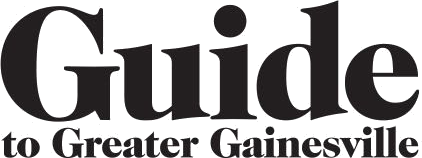Canaery is a venture-backed company developing the first commercial nose-computer interface (NCI) for odor detection and digitization. This technology reads neural signals directly from the olfactory bulb of mammals. It decodes those signals to identify the diverse set of volatile compounds, aka odors, in the air
Unlike current portable chemical sensors, such as those based on Gas Chromatography (GC) or Ion Mobility Spectroscopy (IMS), Canaery technology uses animals’ unique sense of smell as a sensor. It can simultaneously detect virtually any complex odor in under two seconds –– similar to a bomb sniffing dog at airport security.
Canaery is deploying its technology to various industries to serve unmet detection needs. Soon, NCI will perform situational, non-invasive detection of physiologic and infectious diseases, inspecting cargo containers for contraband and identifying explosives or biological threats.
The Genesis of this Cutting-Edge Technology

According to co-founder Dr. Gabriel John Lavella on the genesis of Canaery, “I was a Berkeley Sensor and Actuator Center member in graduate school. I came into things with a deep understanding of the nuances of biological sensing. It was clear that we lacked any sort of bona fide scent detector that could perform as well as trained animals; that made it somewhat apparent that there was a substantial technological hole and many applications of practical commercial importance.
Lavella states, “Back in 2018, I was at DARPA. After a conference one night, I met up with a scientist named Matt Angle, who was starting his own neurotech company called Paradromics. He introduced me to olfactory interfaces and proposed that DARPA could use them for explosive detection. I was immediately intrigued and began evolving the idea from there.”
Canaery was jointly founded by Dr. Gabriel John Lavella, Dr. Peter Ledochowitsch, and NYU Langone Health professor of neuroscience Dmitry Rinberg.
“Based on our prior work, we all deeply appreciated biological sensors and the brain,” Lavella continued. “We also had a deep appreciation for the canine sense of smell –– which is among the most exquisite in the animal kingdom. Throughout history, people have trained animals to identify and respond to useful scents that would otherwise be untraceable by humans.”
Lavella says, “The hard part was convincing many people that we were not crazy. That didn’t happen overnight. We got a boost by establishing research agreements with NYU Langone Health in New York City and then from the technology incubator, IndieBio, in San Francisco, which immediately saw the potential and got behind the idea. When you have an idea that is as unique as they come, there is a lot of friction, and the first step is often educating people. To people not steeped in olfaction and neural interfaces, Canaery easily sounds like a science fiction project. They might not realize it as a technological leap right around the corner.

For scientists and engineers, the opportunity to invent things that no one else is thinking about –– much less actively working on from a commercial perspective –– is highly motivating.
Canaery stands apart from the rest, as many engineers seek out the opportunity to be the first to explore something in a new way. With the complexity of science behind them, engineers desire vast space to express their creativity, particularly if the impact will be significant
That was certainly the case with digitized smell. The technological and scientific prospecting made possible by Canaery’s technology is like having the microscope for the first time. The company is peering into a world largely hidden from human observation
We are excited to see what we can discover about the world and what industries we can serve,” Lavella said.
The positive societal impacts are the icing on the cake. Canaery’s influence includes:
- the ability to track invasive species or pollutants in the environment
- perform non-invasive early disease detection
- protect people against biological threats –– even the next pandemic
The Future of Smell Detection

Currently, Canaery is focused on product development and field testing a beta MVP device with potential customers. It seeks to partner with organizations interested in exploring how its capabilities can help with their unmet detection needs.
“We can achieve the scale and presence to become a category-defining company. The markets are there, and we have a solid team uniquely positioned to overcome the challenges of that transition,” Lavella said.
Canaery has partnered with the Sid Martin Biotechnology Incubator at the University of Florida with the goal of achieving scale and presence. In addition to providing first-rate animal care services, the Sid Martin Biotechnology Incubator offers access to facilities and services that would not otherwise be available to a company the size of Canaery.
Within the Florida business community, Canaery has access to incredible prospective partners, from leading hospitals and medical researchers to some of the nation’s busiest ports. Canaery is paving the way for a new era of computer interaction, and its technology will surely pass the sniff test.
By Deborah Holmen, M.Ed., NBCT.
